Кира найтли в журнале interview
кира найтли в журнале interview
кира найтли в журнале interview

Недавно Кира Найтли приняла участие в провокационной фотосессии для журнала Interview. На одном из снимков актриса стоит в брюках и кружевных перчатках с обнаженной грудью и невозмутимо смотрит в камеру. Такой Найтли запечатлел маэстро фотографии Патрик Демаршелье.
В интервью британской газете Times Кира призналась, что согласилась продемонстрировать грудь при одном условии – ее не сделают на снимках больше и вообще не будут ретушировать.
«Мое тело столько раз изменяли на снимках по самым разным причинам. То папарацци что-нибудь придумают, то изменят что-то для постера фильма. Перед съемкой для Interview я сказала, что разденусь, если мою грудь не сделают в итоге больше и вообще не изменят. Для меня важно, чтобы все знали – внешность для меня не имеет большого значения», - заявила Найтли.
Актриса также добавила, что женские тела стали настоящем полем битвы, и отчасти в этом виновата фотография. По мнению Найтли, нет ничего проще, чем подогнать тело женщины под определенные стандарты с помощью различных технических средств. Гораздо сложнее обладать мастерством, с помощью которого можно показать естественную красоту женского тела.
Кира Найтли (Keira Knightley) в фотосессии Мерта Аласа и Маркуса Пигготта на страницах журнала Interview (апрель 2012).
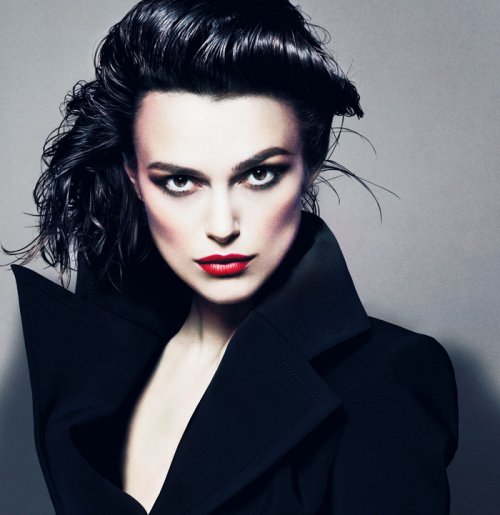
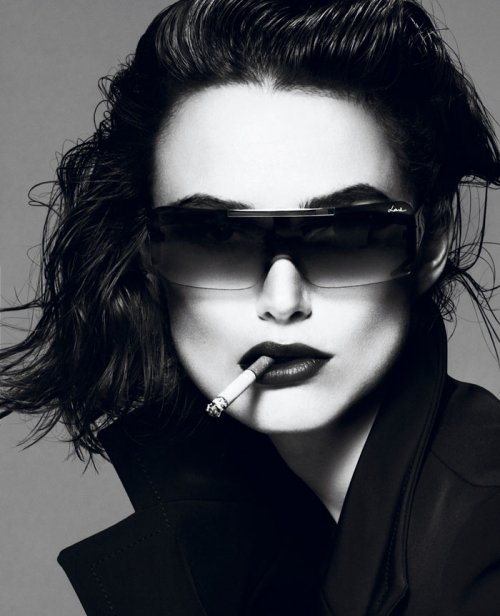

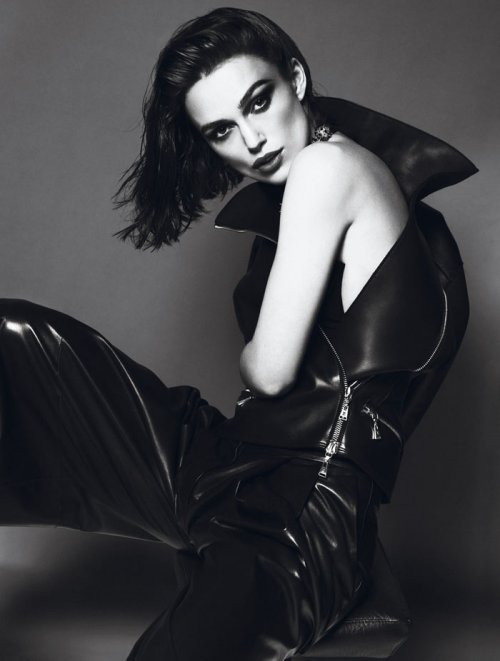
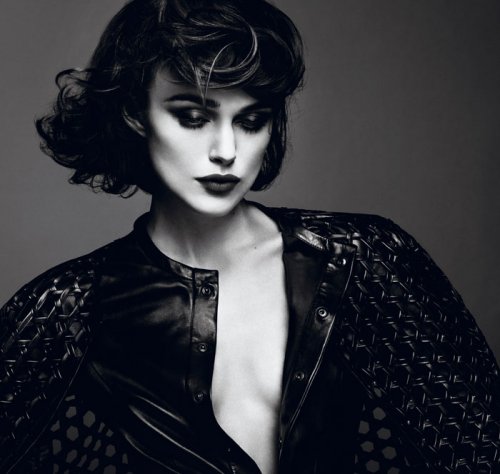

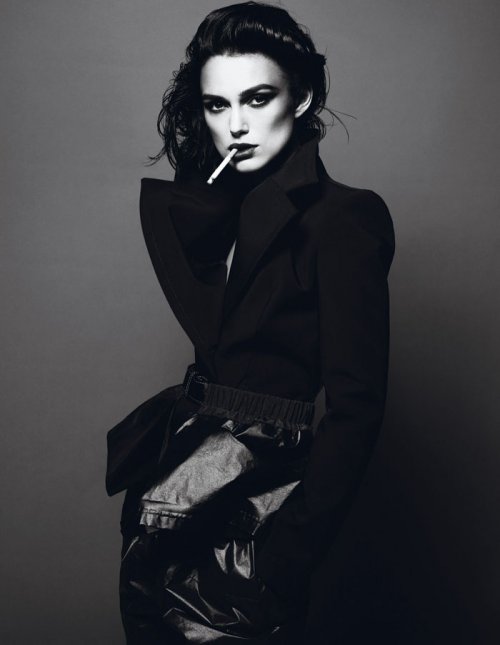

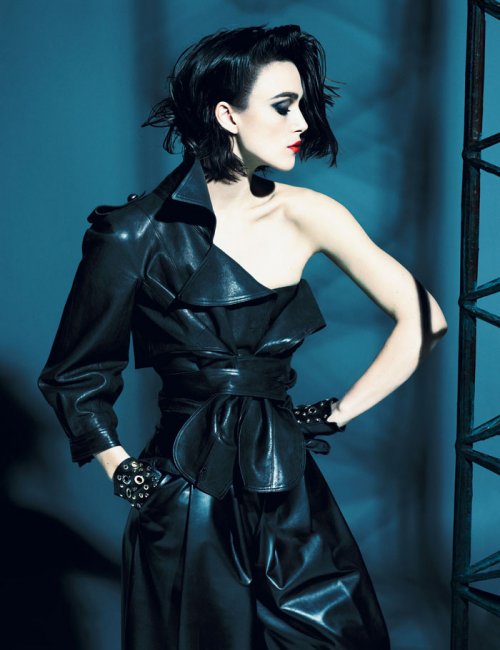

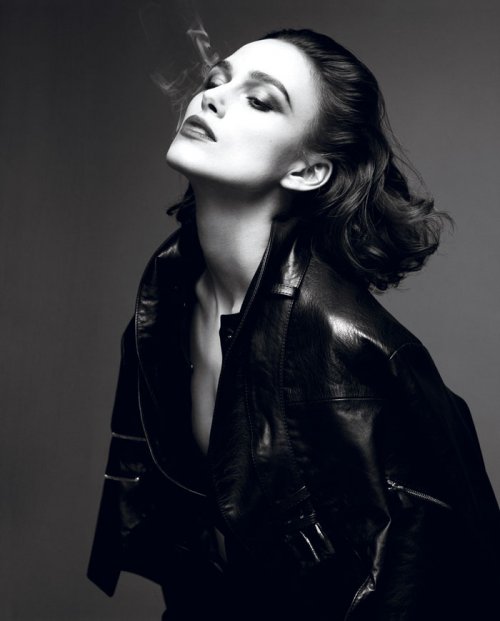

Британская актриса Кира Найтли снялась топлес для журнала Interview. После выхода номера Найтли дала интервью газете The Times, в котором пояснила, что эти снимки – результат ее собственного протеста против редактирования фотографий.
Во время съемки для Interview актриса настояла на том, что ее фото не должны ретушироваться в фотошопе. «Мое тело столько раз изменяли по разным причинам - и папарацци, и дизайнеры, работавшие над постерами к фильмам, - заявила Найтли. - Я сказала: «Хорошо, я согласна сняться топлес, но только если вы не будете увеличивать мою грудь или ретушировать ее».
Резкая акция Найтли связана с ее негативным опытом работы с фотографами, которые увеличивали ее бюст дважды: для афиши фильма «Король Артур» и в рекламе аромата Coco Mademoiselle Chanel.


На прошлой неделе в сети появились первые шесть обложек сентябрьского номера Interview. Автором одной из черно-белых обложек нового выпуска стал Патрик Демаршелье, который снимал актрису Киру Найтли. На одном из снимков французского фотографа Кира предстала в неоднозначном образе: худенькая актриса полностью обнажила грудь, а мокрая копна волос свисает на ее лицо.
Впрочем, все прочие кадры, где Кира демонстрирует великолепные наряды от Chanel, Hugo Boss и Donna Karan, выглядят куда более привычно для глянца.

Кира Найтли в фотосессии для журнала Interview за сентябрь 2014

Кира Найтли в фотосессии для журнала Interview за сентябрь 2014

Кира Найтли в фотосессии для журнала Interview за сентябрь 2014

Кира Найтли в фотосессии для журнала Interview за сентябрь 2014

Кира Найтли в фотосессии для журнала Interview за сентябрь 2014
Блогер Pchelkamia отыскала всю фотосессию
Киры Найтли, ставшей героиней апрельского выпуска журнала Interview и украсившей его
обложку. Кому-то прекрасная и загадочная леди с кроваво-красными губами напомнила
вампира, а кого-то эта плохая девочка с сигаретой мысленно отослала в далекие
1980-е. Именно та эпоха и комиксы вдохновили авторов этих снимков - дуэт
MertMarcus. Выдержки из
интервью
актрисы изданию вы можете найти у нас на сайте, сейчас же мы предлагаем
оценить фотосессию.
При взгляде на Киру, которая сыграла Анну Каренину в голливудской экранизации романа Льва Толстого, становится понятно, почему она уже не первый год возглавляет всевозможные хит-парады самых сексуальных и красивых знаменитостей.











Источники: Interview, Interview

By Keira KnightleyPhotographed by Patrick Demarchelier Photography Patrick DemarchelierAugust 23, 2014Things really go quickly with me . . . I like to be spontaneous and get a shot before the subject thinks too much about it. Patrick Demarchelier
Patrick Demarchelier was born outside of Paris in 1943, and any movie about his life would necessarily include the poignant scene of his stepfather giving the self-professed troublemaker an Eastman Kodak camera for his 17th birthday. After assisting the likes of Hans Feurer, the young Demarchelier struck out on his own, moved to New York, and developed his now signature, striking style of fashion photography. Destabilizing an elaborately staged fashion editorial or a portrait of Diana, Princess of Wales, for whom he was the official photographer, with a spark of spontaneity, Demarchelier creates a kind of verve, a frisson that has made him a legend, and his name a byword for fashion royalty—the very first thing Miranda Priestly wants to know of her hopeless new assistant in The Devil Wears Prada is “Did Demarchelier confirm?”
The Duchess (2008) star Keira Knightley knows a little something about onscreen royalty. In November she will appear alongside Benedict Cumberbatch in the WWII drama The Imitation Game, about the Enigma-code-breaking machine. Here, she tries to decode Demarchelier, getting the photographer to look at his life through the lens. Like the Devil‘s do-gooder assistant, she’s got Patrick.
KEIRA KNIGHTLEY: Hey, Patrick! How are you?
PATRICK DEMARCHELIER: Very good. I’m in Long Island on holiday. In a few days, I have a trip to Sweden. After that, I’m going back to New York for one day and then to St. Barts for a trip to work for a few days, then I’m finished.
KNIGHTLEY: Oh my God, you’re everywhere. Where are you going in Sweden?
DEMARCHELIER: We’re going to the north. It’s a hotel and spa. It’s on top of a tree.
KNIGHTLEY: On top of a tree? Is it the place where they have a box of mirrors, so you can’t see it? Have you been to this hotel before?
DEMARCHELIER: No, never. I’ve been to Sweden—my wife is Swedish—but this is a new place. How are you doing? Are you doing a movie now?
KNIGHTLEY: No, I’m not. What am I doing? I just bought a load of books that I’ll read over the summer and hopefully choose another film based on that. I don’t know if that’ll happen, but it’s quite a good way of working. Okay. I’m going to ask you questions. What’s your favorite picture that you’ve ever taken?
DEMARCHELIER: I don’t really think about that. For me, the new pictures are what I’m thinking about every day. The past is the past, no? Every day is a new challenge. Like for you, the movie that you’ll be in is a new challenge. Photography is just the shot—one day, two days—and the next day you’re gone.
KNIGHTLEY: Do you take pictures even when you’re not on shoots? Do you always have a camera with you?
DEMARCHELIER: Not too much, no. I don’t take the camera out with me. My eyes are the camera for me every day.
KNIGHTLEY: So does that mean if you’re walking around, you get inspiration, log it in your head, and maybe use it at some point?
DEMARCHELIER: Exactly. If you love it, it’s in your system.
KNIGHTLEY: What would be your ideal day, your dream day?
DEMARCHELIER: Every day is a dream, every day I spend with my wife.
KNIGHTLEY: Aw. Is it just fashion that you do?
DEMARCHELIER: No. I do fashion, portraits, nude. Sometimes animals, too. I love Africa. I love the wild. I love my dog. Actually, the best portrait I did was of my dog.
KNIGHTLEY: What sort of dog is it?
DEMARCHELIER: It’s a longhaired daschund. And it’s very funny, at a show in Paris, about six years ago—at the Petit Palais, the museum by the Champs-Élysées—there was a big show there, with a big picture of my dog, Puffy, like three meters high. [laughs]
KNIGHTLEY: What is your next show?
DEMARCHELIER: I’m doing a show in Tokyo, with Dior. I did a book for Dior haute couture three years ago, and I have a new book for them coming out in November. We’re doing a show in Tokyo with the pictures and the clothes mixed together.
KNIGHTLEY: How does it work, collaborating with a house like that? You have to keep the tradition but continue it moving forward, right?
DEMARCHELIER: They let me do what I want, basically. They give me the clothes and I do what I want. It’s a very interesting project.
KNIGHTLEY: You said something really interesting to me on the shoot: “You have to relax your face, because that’s what good movie acting is, a relaxed face. It’s the same thing as having pictures taken.”
DEMARCHELIER: The face is supposed to be relaxed. The more you relax …
KNIGHTLEY: You’re absolutely right. It’s very funny, because no photographer has ever said that to me before and made the kind of connection between the two things. You shoot digital, right? Do you still shoot on film as well?
DEMARCHELIER: Very rarely, only for special effect when I need it. Otherwise I don’t do film anymore.
KNIGHTLEY: I’ve noticed that the people who started on film still have the ability to see the person in front of them. Whereas for a lot of photographers who have only ever worked in digital, the relationship between the photographer and the person who they’re taking a picture of sort of doesn’t exist anymore. They’re looking at a computer screen as opposed to the person.
DEMARCHELIER: Exactly. I love digital, but the only problem is less intimacy. People look at the screen right away. Before, nobody saw the picture before you saw the final picture. There was more privacy in a way.
KNIGHTLEY: Does everybody then obsess about the image, suddenly trying to be perfect, as opposed to trying to capture a moment?
DEMARCHELIER: Yes. Now you work more like a team, with people who have good taste. It’s interesting. You can correct things, and if you don’t like an image right away, you can change it. Before you used to do a lot of pictures and pick a picture after. You can’t really compare; it’s a different way to work.
KNIGHTLEY: Would you ever go back to shooting on film, or do you think you’ve got to keep going forward?
DEMARCHELIER: Film is not very practical. The new world goes faster, and digital is very fast.
KNIGHTLEY: Do you miss any of the physicality of it? I think I’m a horrific kind of romantic about film. There’s something about that single shot that was one moment in time, and something about the physical process of the light hitting the lens and the dark room. I find it difficult to see the romance in digital.
DEMARCHELIER: It can do that too, actually. I do a Polaroid before shooting. A Polaroid you do one picture, three pictures, it’s really a moment. Capturing that moment with those pictures is interesting.
KNIGHTLEY: Your shoot the other day was probably the fastest photo shoot I’ve ever been on in my life, which was excellent. Have you always been really quick?
DEMARCHELIER: Ah. Things really go quickly with me. I like to do the pictures before people get too self-conscious. I like to be spontaneous and get a shot before the subject thinks too much about it. Sometimes it can be interesting to be very slow, so if you’re very, very slow, you get so bored that it’s interesting too. [laughs]
KNIGHTLEY: Who were the worst people to photograph?
DEMARCHELIER: Everybody can take a good picture. Everybody is interesting. Everyone has an interesting face. Some people are more difficult or more nervous or more tired. When you do a movie, you have action, you’re talking, you’re moving. You don’t see the camera. Taking a picture with a photographer, you don’t talk, it’s more difficult than in a movie for your body to relax, to be yourself.
KNIGHTLEY: Definitely. You’re looking for one moment that tells that story or whatever you’re trying to capture. Have you ever done film?
DEMARCHELIER: I do commercials sometimes. It’s funny because, for commercials, sometimes I work for a client and they say, “The model was not great.” In the moving image she was fine, but in the still photo it was difficult to get an image of her. It’s typical of doing a movie, because in the movie, you’re moving, you have personality, you don’t have to be great looking.
KNIGHTLEY: How did you come to your idea of beauty? Did you have idols when you were growing up, people whom you admired artistically?
DEMARCHELIER: Beauty is everywhere. And, no, my photography came naturally without any particular inspirations growing up.
KEIRA KNIGHTLEY IS A BRITISH ACTRESS WHO WILL STAR IN THE IMITATION GAME, OUT IN NOVEMBER.
For more from the Photographers’ Portfolio, click here.
Кира Найтли в одном из последних интервью рассказала, почему решилась на откровенную фотосессию для журнала Interview. Главным требованием 29-летней актрисы, отличающейся худобой и тонкостью черт, стало отсутствие ретуши на окончательном этапе обработки снимков. «Хорошо, я согласна на снимки топлес, если вы не будете увеличивать мою грудь в фоторедакторе и ретушировать ее», — обратилась Кира Найтли с просьбой к культовому фотографу Патрику Демаршелье. Своим решением голливудская актриса дала понять работникам глянцевого журнала и читателям, что любит свою грудь, несмотря на ее крошечный размер.
Также звезда фильмов о пиратах Карибского мира призналась, что ее тело не раз подвергалось постобработке на фотоснимках. «Мое тело бесчисленное количество раз переделывали в фоторедакторах. Это делали и журналисты таблоидов, и официальные прокатчики, — рассказала Кира Найтли. — Я думаю, женское тело сейчас стало настоящим полем битвы, в какой-то степени это вина фотографии. Современное общество настолько замылило свой взгляд, что перестало воспринимать различные виды фигур».
Напомним, выход фильма «Король Артур» в 2004 году ознаменовался скандалом. В Сети появились оригинальные фотографии постера с Кирой Найтли без ретуши. На снимках «до и после» отчетливо было видно работу фоторедактора: актрисе уменьшили живот и значительно увеличили грудь. Стоит отметить, что грудь звезды уже успела стать легендарной: ей придавали объем интернет-блогеры и ретушеры рекламной кампании Chanel, о ней отзывались знаменитости. Так, Джонни Депп в одном из интервью сравнил нулевой размер Киры Найтли с «гладильной доской, на которую положили две таблетки аспирина».


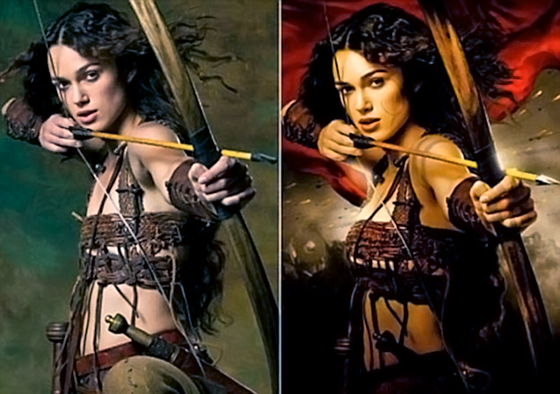
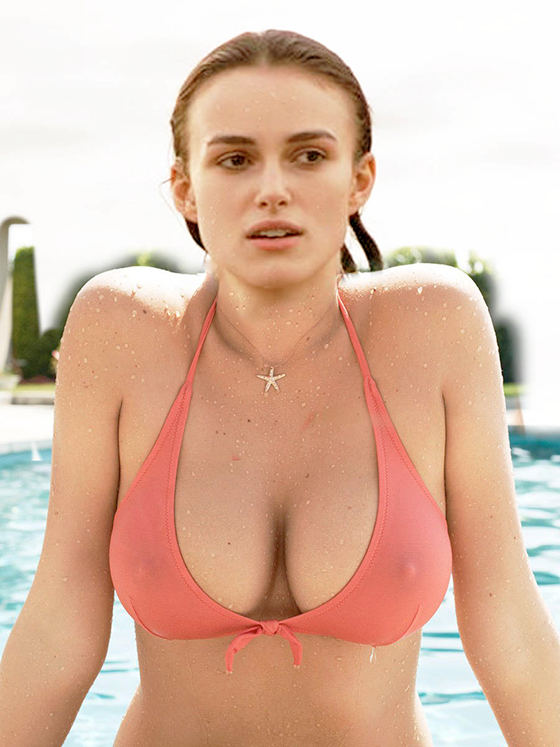

Оставлять свои CRAZY комментарии могут только зарегистрированные пользователи.
Пожалуйста пройдите простую процедуру регистрации или авторизируйтесь под своим логином. Также вы можете войти на сайт, используя существующий профиль в социальных сетях (Вконтакте, Одноклассники, Facebook, Twitter и другие)
